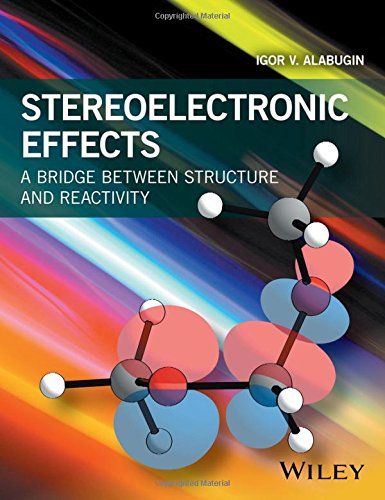

Most ebook files are in PDF format, so you can easily read them using various software such as Foxit Reader or directly on the Google Chrome browser.
Some ebook files are released by publishers in other formats such as .awz, .mobi, .epub, .fb2, etc. You may need to install specific software to read these formats on mobile/PC, such as Calibre.
Please read the tutorial at this link. https://ebooknice.com/page/post?id=faq
We offer FREE conversion to the popular formats you request; however, this may take some time. Therefore, right after payment, please email us, and we will try to provide the service as quickly as possible.
For some exceptional file formats or broken links (if any), please refrain from opening any disputes. Instead, email us first, and we will try to assist within a maximum of 6 hours.
EbookNice Team

Status:
Available4.6
36 reviewsStereoelectronic Effects illustrates the utility of stereoelectronic concepts using structure and reactivity of organic molecules. This advanced textbook provides an up-to-date overview of the field, starting from the fundamental principles and presenting a large selection of modern examples of stereoelectronic effects in organic reactivity. Modern theoretical concepts are described in an accessible manner for students and experimentalists working in organic synthesis, medicinal chemistry and materials science; the background/concept part of the book is based on a wealth of computational and theoretical work but the mathematics behind the concepts is distilled in a general non-technical discussion of the role of stereoelectronic effects in chemistry.
Topics covered include:
• Effects of orbital overlap on reactivity
• Experimental and theoretical approaches for studies of stereoelectronic effects
• The fundamentals of stereoelectronic effects
• Hyperconjugative stereoelectronic effects
• Transition state stabilization
• Remote stereoelectronic effects
• Practical applciations of stereoelectronic effects in asymmetric catalysis, photochemical processes, bioorganic chemistry and biochemistry, inorganic and organometallic reactivity, supramolecular chemistry and materials science.
The aim of this book is to make life easier for students of organic chemistry and practicing organic chemists by providing them with a concise set of rules which govern interactions between molecules and between functional groups in molecules. These rules will offer a unifying framework for the understanding of molecular structure and reactivity.